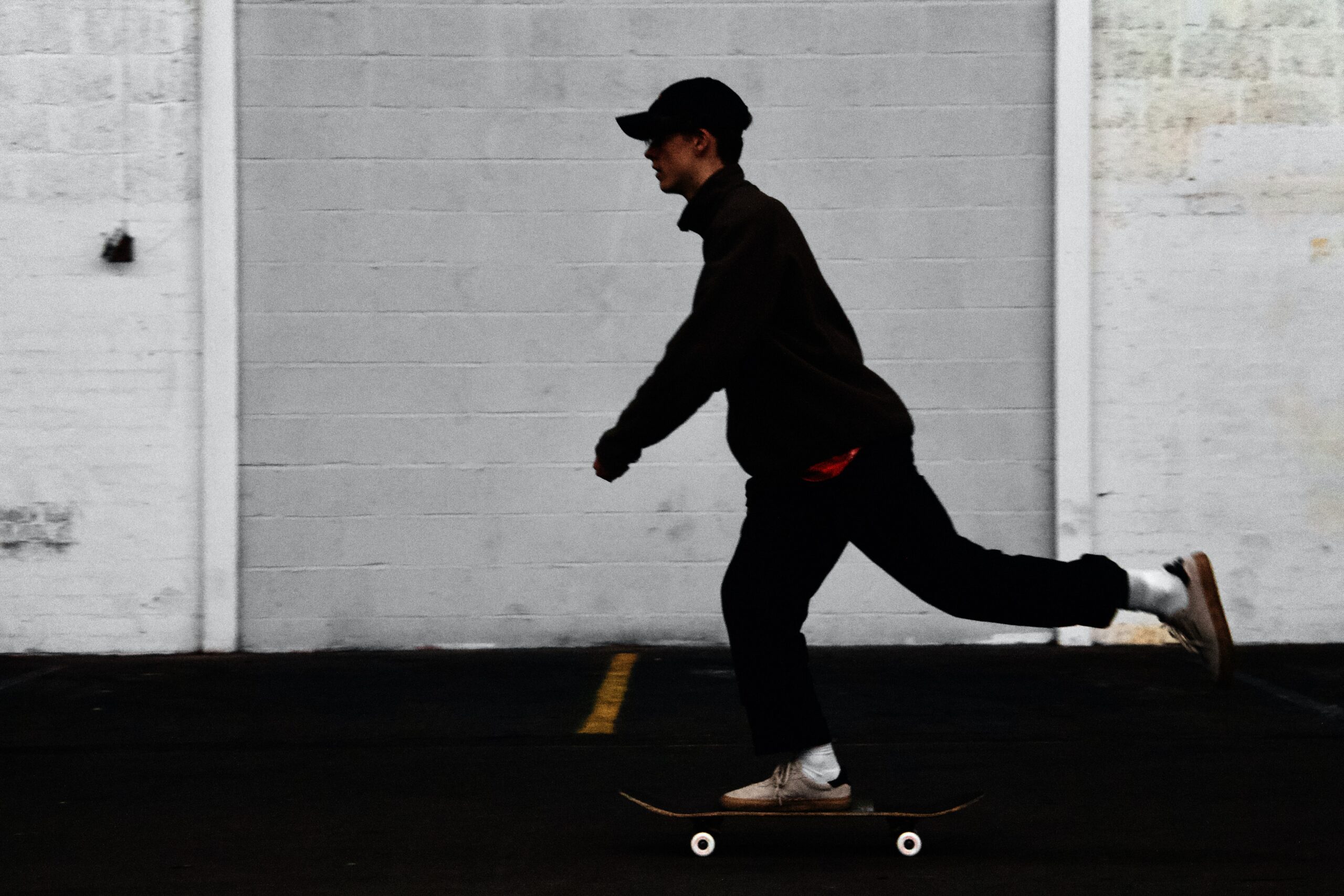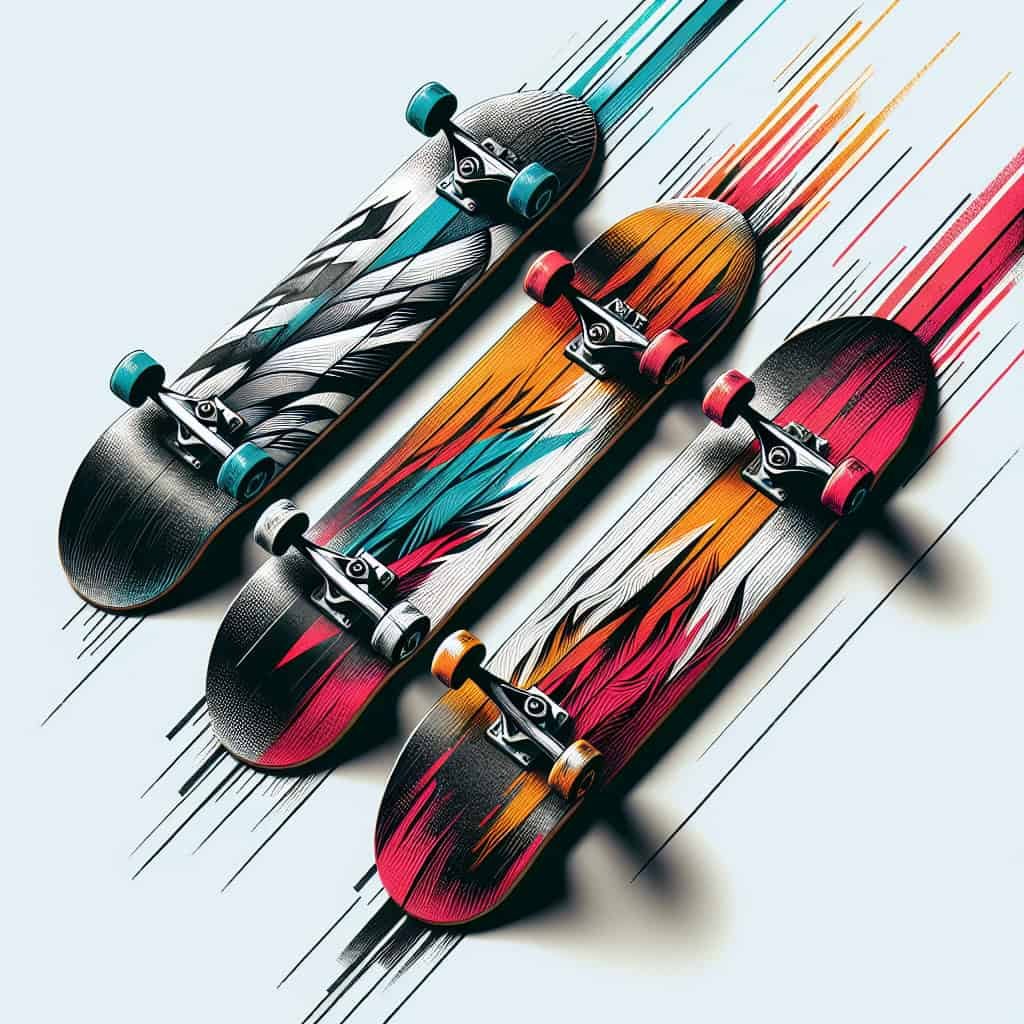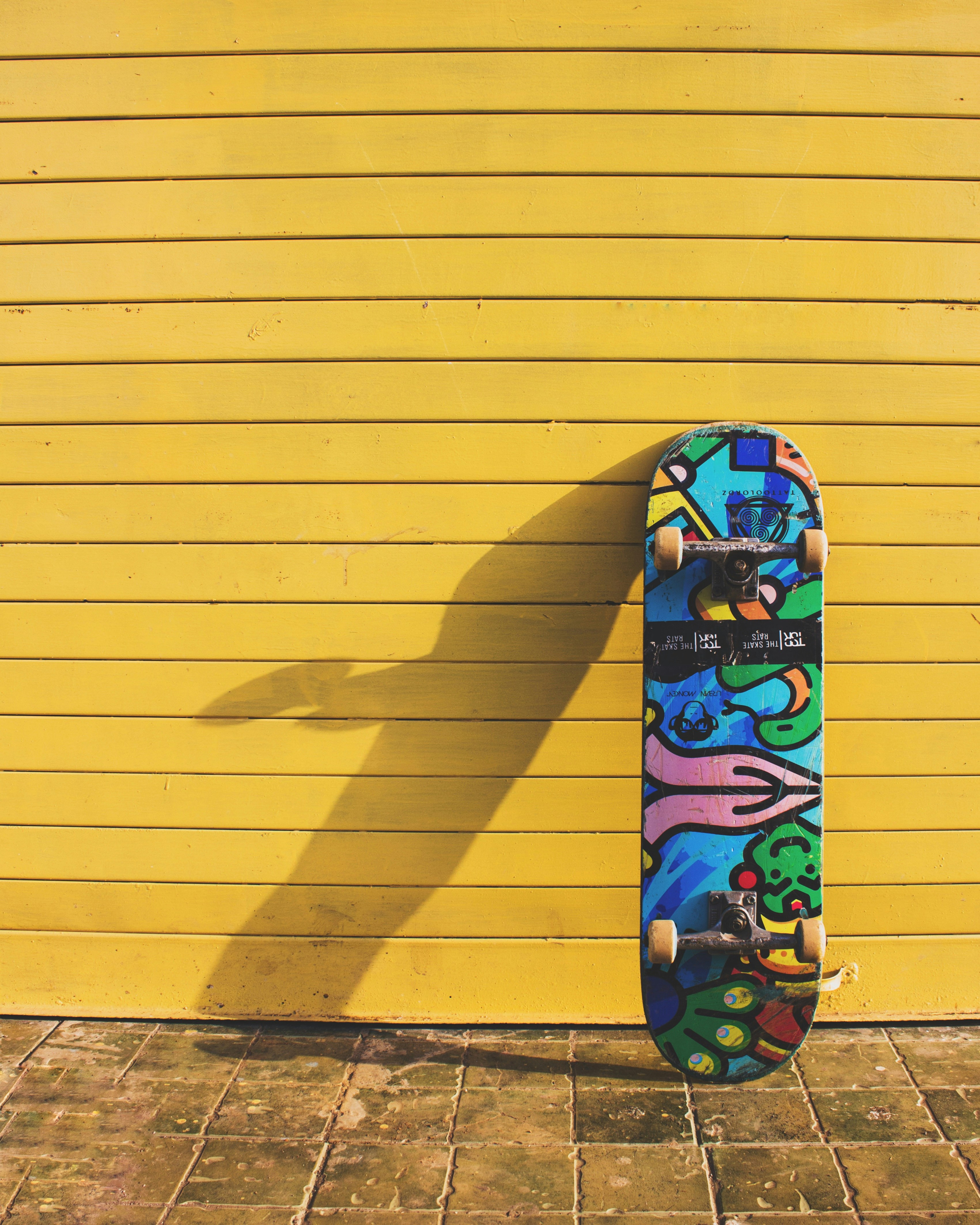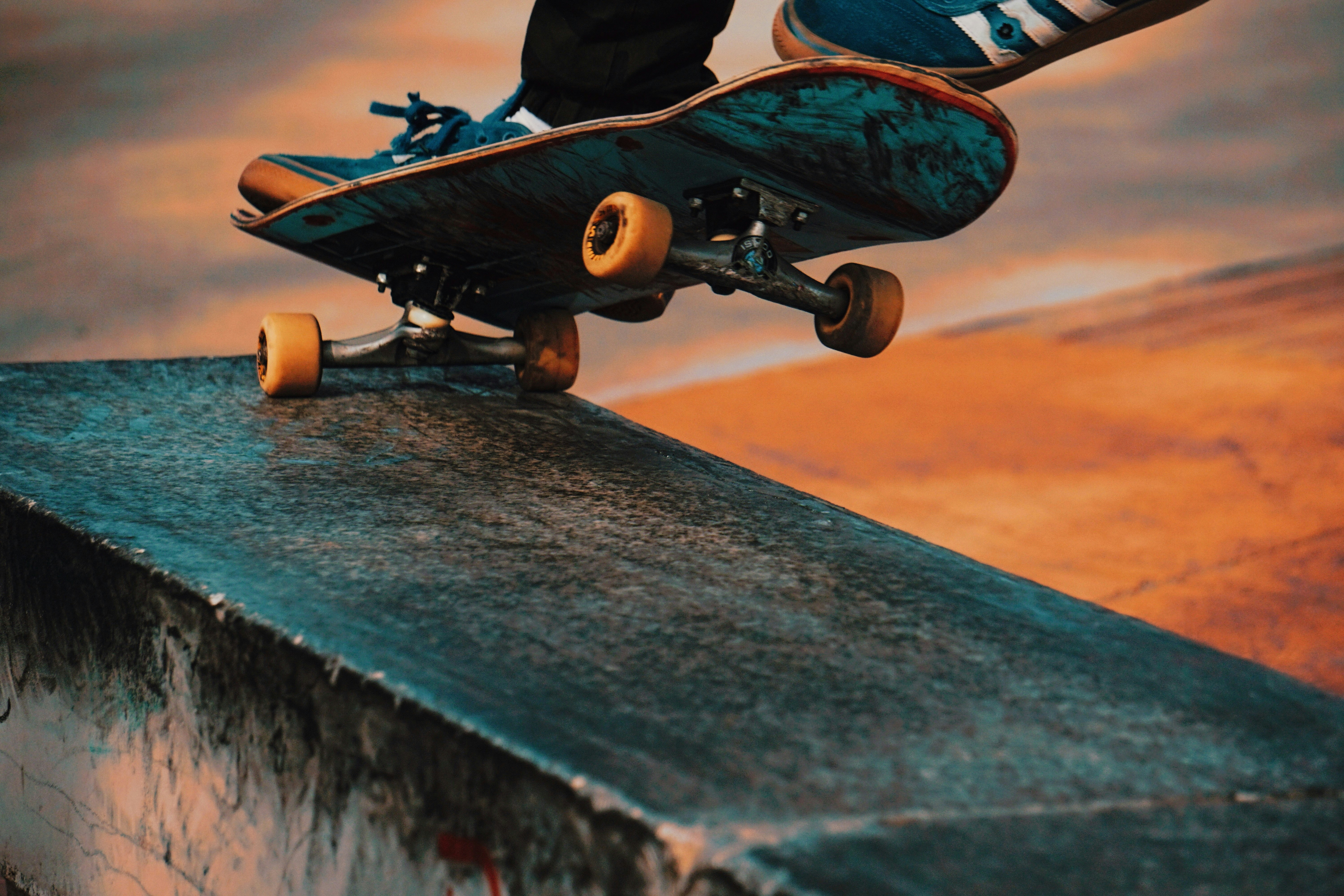Skateboarding enthusiasts, have you ever wondered how the width of a skateboard deck affects its stability and control? In this article, we will explore the fascinating relationship between deck width and the way it influences how a skateboard feels and performs. Whether you’re a seasoned skater or just starting your journey in the world of skateboarding, understanding this crucial aspect of your board can greatly enhance your overall riding experience. So, let’s dive into the impact of deck width on skateboard stability and control, and uncover the factors that can make all the difference in mastering your tricks and maneuvers.
Factors Affecting Skateboard Stability and Control
Skateboarding is a highly dynamic sport that requires precision and control. Several factors contribute to the stability and control of a skateboard, including the center of gravity, truck width and tightness, wheelbase length, deck concave, and wheel size and hardness. Understanding how these factors influence skateboard performance can help riders optimize their setup for a more enjoyable and controlled ride.
Center of Gravity
The center of gravity refers to the point at which an object’s weight is evenly distributed. In skateboarding, your body’s position on the board determines the location of the center of gravity. By adjusting your stance and balance, you can affect the stability and control of the skateboard.
Truck Width and Tightness
The trucks on a skateboard play a crucial role in stability and control. The width of the truck, measured axle to axle, affects the overall stability of the board. Wider trucks provide more stability and are ideal for riders who prioritize balance over maneuverability. Conversely, narrower trucks offer increased maneuverability but may sacrifice some stability. Additionally, adjusting the tightness of the trucks affects how easily you can turn. Looser trucks allow for sharper turns, while tighter trucks provide more stability at higher speeds.
Wheelbase Length
The wheelbase length refers to the distance between the front and back trucks on a skateboard. It determines the lever arm between the two axles and influences the board’s turning radius, stability, and overall control. Longer wheelbases offer greater stability at high speeds and provide a smoother ride. In contrast, shorter wheelbases result in a more responsive and agile board, suitable for quick turns and tricks.
Deck Concave
Deck concave refers to the curvature of the skateboard deck from side to side. Different deck profiles offer varying degrees of concave, affecting how your feet connect with the board. A deeper concave provides more grip and control, allowing for precise foot placement and increased stability. On the other hand, a flatter deck with minimal concave offers a more neutral feel and may be preferred by riders who prioritize versatility and freedom of movement.
Wheel Size and Hardness
The size and hardness of your skateboard wheels directly impact stability and control. Larger wheels provide a smoother ride over rough terrain and maintain momentum better, offering enhanced stability. However, they may sacrifice maneuverability and make tricks more challenging. Softer wheels also improve stability by absorbing vibrations and impacts from rough surfaces. Conversely, harder wheels are more responsive and provide better control for technical tricks but may feel less stable on uneven terrain.
Understanding Deck Width
The width of the skateboard deck is one of the most critical factors affecting stability and control. It influences how the board responds to your movements and dictates your overall riding experience.
Definition of Deck Width
Deck width is measured across the widest part of the skateboard deck, typically between the edges of the trucks. It is often expressed in inches and serves as a primary identifier of skateboard sizes. The width directly affects how much surface area is available for foot placement.
Standard Deck Widths
Skateboard decks come in various widths, ranging from around 7.5 inches to 9 inches and beyond. The most common standard widths are 7.75 inches, 8 inches, and 8.25 inches. These dimensions cater to a wide range of riders and styles of skateboarding, offering a balance between stability and maneuverability.
Variations in Deck Width
Beyond the standard widths, skateboard manufacturers also produce decks with narrower or wider dimensions to cater to specific preferences or riding styles. Narrower decks, typically below 7.5 inches, are often favored by street skateboarders who prioritize quick flips and technical tricks. Conversely, wider decks, typically above 8.5 inches, are popular among transition skateboarders who require greater stability for ramp riding and bowl skating.

The Relationship Between Deck Width and Stability
Deck width directly influences stability, with wider decks generally providing a more stable platform. This stability stems from the increased surface area available for your feet, allowing for better weight distribution. However, it’s essential to consider how stability can impact maneuverability and individual riding styles.
Larger Deck Width and Stability
A wider skateboard deck offers more stability, especially at higher speeds. Riders who prioritize stability often opt for wider decks to enhance their control over the board. This increased stability is particularly beneficial for downhill riding, cruising, or riders with a larger stature. The wider platform allows for greater balance, making it easier to maintain control and navigate various terrains.
Smaller Deck Width and Stability
While narrower decks may sacrifice stability, they excel in maneuverability. Street skateboarders frequently choose narrower decks to facilitate technical tricks and quick turns. Smaller, more agile boards allow for rapid flicks and precise control, making them ideal for navigating urban environments with tight spaces and obstacles. However, it’s important to note that these narrower decks may feel less stable at higher speeds and on unstable surfaces.
Deck Width and Center of Gravity
The width of your skateboard deck also affects your center of gravity, as it influences the positioning of your feet on the board. With a wider deck, your feet are spaced further apart, lowering your center of gravity. This lower center of gravity increases stability and offers a more planted feel when riding. Conversely, a narrower deck brings your feet closer together, raising your center of gravity. This higher center of gravity may provide better maneuverability but can feel less stable, especially for riders who prioritize control and balance.
Effects of Deck Width on Control
Control over a skateboard is paramount for executing tricks, maintaining balance, and adapting to different terrain. Deck width plays a significant role in determining how effectively you can control your board.
Board Feel and Sensitivity
The width of the skateboard deck affects how you perceive the board beneath your feet. A narrower deck provides a more direct connection between your feet and the board, amplifying sensations and increasing sensitivity. This heightened board feel allows for precise weight distribution and quick adjustments, making it ideal for technical tricks and flip tricks. In contrast, wider decks may offer a more dampened board feel, providing a sense of stability and comfort during extended rides or high-speed maneuvers.
Maneuverability
Maneuverability refers to the ease and responsiveness with which you can turn and pivot your skateboard. While wider decks offer stability, they often sacrifice maneuverability. The increased width makes it slightly more challenging to initiate turns and execute tight, quick movements. On the other hand, narrower decks excel in maneuverability, providing a snappy and nimble feel. This agility is essential for street skateboarding, where precise footwork and quick turns are crucial for navigating obstacles and performing technical tricks.
Foot Placement
Deck width influences where you position your feet on the skateboard. With a wider deck, you have more space to distribute your weight and adjust your foot placement according to specific tricks or riding styles. This flexibility allows for experimentation and optimization of your stance for enhanced control. Conversely, narrower decks often require more precise foot placement, as the available surface area is limited. Proper foot positioning becomes essential to maintain stability and execute tricks effectively.
Deck Width vs. Riding Style
Different styles of skateboarding demand specific characteristics from a skateboard deck. Understanding how deck width aligns with various riding styles can help you choose the right board for your preferred discipline.
Street Skateboarding
Street skateboarding is characterized by technical tricks performed on urban obstacles like stairs, rails, and ledges. Riders often favor narrower decks, typically ranging from 7.5 to 8.25 inches, for their high level of maneuverability. This deck width allows for quick and precise footwork, facilitating the execution of flip tricks and grinds on narrow surfaces. Additionally, the narrower width of street decks enables better control over the board, enhancing the rider’s ability to navigate through tight spaces and perform tricks with ease.
Vert Skateboarding
Vert skateboarding involves riding on halfpipes, quarterpipes, and other transition-based structures. For this discipline, wider decks, usually above 8 inches, are commonly preferred due to their increased stability. The wide platform allows the rider to distribute weight evenly, providing a solid foundation for generating speed and executing tricks in vertical environments. Additionally, the wider deck offers more surface area for locking in aerial maneuvers and maintaining stability during high-speed landings.
Transition Skateboarding
Transition skateboarding encompasses riding bowls, ramps, and other curved transitions. Deck width for transition skateboarding falls within a broad range, typically ranging from 8 to 8.5 inches. The width ensures a balance between stability and maneuverability, allowing riders to maintain control during high-speed carving while still enabling quick direction changes and aerial maneuvers. The versatility of deck widths for transition skateboarding caters to individual preferences in terms of stability and agility, depending on the specific ramp or bowl being ridden.
Deck Width and Skill Level
Different deck widths can be beneficial for skaters of different skill levels. Consider your proficiency level when choosing the appropriate deck width to optimize control and progression.
Beginners
For beginners, it is advisable to start with a wider deck, usually between 8 and 8.25 inches. A wider platform provides increased stability, making it easier to maintain balance and control. This extra stability allows beginners to focus on developing proper foot positioning and fundamental skills without feeling too wobbly or insecure. As beginners gain confidence and proficiency, they can experiment with narrower widths to explore increased maneuverability and refine their riding style.
Intermediate Skaters
Intermediate skaters who have honed their basics tend to have greater control over their boards. At this stage, skaters can choose deck widths depending on their riding style and preferences. Narrower deck widths, typically between 7.75 and 8 inches, offer increased maneuverability and responsiveness, allowing intermediate riders to excel in technical tricks. On the other hand, slightly wider decks, around 8.25 inches, maintain stability while providing a balance between maneuverability and control.
Advanced Skaters
Advanced skaters have developed their own riding style, preference, and skill set. These skaters possess the expertise to experiment with a broader range of deck widths, tailoring their choices to their specific needs. Advanced skaters often gravitate towards narrower deck widths, as they prioritize maneuverability and leverage precise footwork for executing complex tricks. However, individual preference remains paramount at this stage, allowing advanced skaters to fine-tune their setup for optimal performance.
Choosing the Right Deck Width
When selecting a skateboard deck, several factors come into play, with deck width being one of the most crucial elements. Consider the following aspects to ensure you choose the right deck width for your needs:
Personal Preference
Personal preference plays a significant role in determining the ideal deck width. Consider your riding style, terrain preferences, and the tricks you wish to perform. Experiment with different deck widths to gauge how they affect your overall comfort, control, and enjoyment while skateboarding.
Body Proportions
Your body proportions can influence the ideal deck width for your riding style. A general guideline is to match your deck width to the width of your shoe, ensuring your feet have enough support and the board feels comfortable underfoot. Additionally, considering your height and weight can help determine whether you need more stability from a wider deck or more maneuverability from a narrower one.
Skill Level and Riding Style
Your skill level and preferred riding style should also inform your deck width selection. Beginners and riders who prioritize stability would benefit from wider decks, while intermediate and advanced skaters may prefer narrower widths for increased maneuverability and responsiveness. Consider the specific demands of your riding style and choose a deck width that aligns with those requirements.
Deck Width and Trick Selection
Skateboarding is synonymous with a diverse range of tricks and maneuvers. The deck width you choose can impact the ease and execution of different types of tricks.
Technical Tricks
Technical tricks, such as flip tricks and intricate footwork, require precise control and foot placement. Narrower deck widths excel in providing the necessary sensitivity and responsiveness for technical tricks. The reduced weight, combined with a smaller surface area, allows for quick flicks and better board feel, facilitating the execution of complex maneuvers.
Transition Tricks
Transition tricks performed on ramps, bowls, and other curved surfaces often demand a balance between stability and agility. Deck widths in the mid-range, approximately 8 to 8.5 inches, allow riders to maintain stability during high-speed carves and aerial maneuvers while still offering enough maneuverability for quick direction changes and tricks like lip slides and airs.
Grinds and Slides
Grinds and slides involve balancing on specific parts of the skateboard, such as the trucks or the edges of the deck. Deck width plays a role in optimizing stability and control during these maneuvers. Wider decks offer a larger platform for stability when grinding or sliding, increasing your chances of successfully executing these tricks. However, some riders appreciate the challenge of narrower decks for grinds and slides, as they require more precise foot placement and a heightened sense of control.

Deck Width and Stability Modifications
In addition to choosing a suitable deck width, skateboarders can make various modifications to their setup to further enhance stability and control.
Adding Grind Rails
Grind rails, also known as slide rails or coping, can be attached to the edges of your skateboard deck. These rails allow for smoother and more controlled grinds and slides, increasing both stability and the lifespan of your deck. By reducing friction, grind rails improve the overall feel and control when performing tricks that involve sliding, grinding, or coping tricks.
Wheelbase Adjustments
Adjusting the wheelbase length can significantly impact the stability and control of your skateboard. By changing the distance between the front and back trucks, riders can fine-tune their setup to suit personal preferences and riding styles. A longer wheelbase offers increased stability and is ideal for riders who prioritize control, while a shorter wheelbase enhances maneuverability and responsiveness.
Truck Tightness
Fine-tuning the tightness of the trucks is another way to optimize stability and control. Looser trucks allow for easier turning and more fluid movements, providing increased maneuverability. On the other hand, tighter trucks offer better stability at high speeds and during landings but may sacrifice some agility. Experimenting with different levels of truck tightness can help you find the perfect balance between stability and maneuverability for your riding style.
Conclusion
Skateboard stability and control are influenced by several factors, with deck width being a critical element. Choosing the right deck width is crucial in optimizing your riding experience, as it affects stability, maneuverability, and overall control. Consider your personal preferences, body proportions, skill level, and specific riding style when selecting a deck width. Experimentation and fine-tuning, alongside various stability modifications, can help you achieve the ideal setup that caters to your unique needs as a skateboarder. So go ahead, find the deck width that suits you best, and get ready to unlock your full skateboarding potential. Happy shredding!



